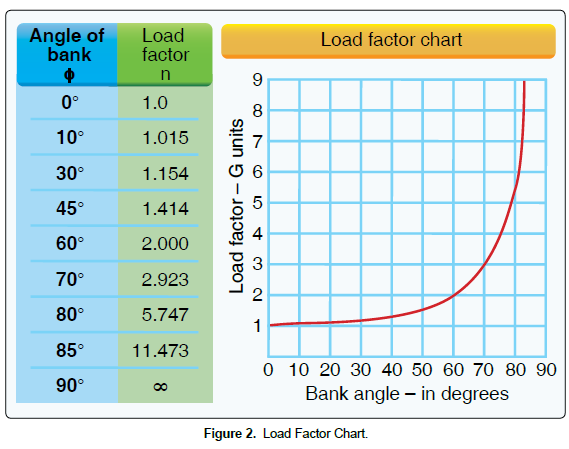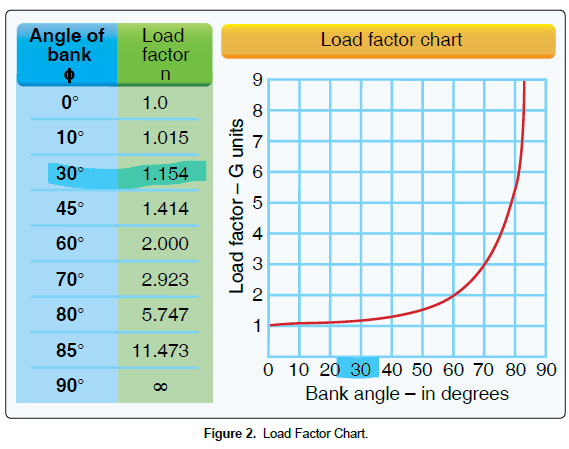FAA(Refer to FAA-CT-8080-2H, Figure 2.) If an unmanned airplane weighs 33 pounds, what approximate weight would the airplane structure be required to support during a 30° banked turn while maintaining altitude?
- ❌A:34 pounds.
- ❌B:47 pounds.
- ✅C:38 pounds.

FAA-CT-8080-2H Figure 2 - Click to enlarge.
Answer Figure

Click to enlarge answer figure
Explanations
- A: This is incorrect. A 34-pound load factor would imply that the aircraft's weight barely changes during a 30° banked turn. This is not accurate as the load factor increases with bank angle, which can significantly affect the aircraft's performance and safety.
- B: This is incorrect. A 47-pound load factor significantly overestimates the increase in weight during a 30° banked turn. Overestimating load factors can lead to unnecessary operational restrictions and inefficiencies.
- C: This is correct. During a 30° banked turn, the aircraft's load factor increases to approximately 1.154 times its weight. This means a 33-pound drone would need to support around 38 pounds. Understanding this is crucial for safe operations and efficient flight planning.
🧭 Instructor Note
Why This Matters for Your Business
Understanding load factors is crucial for safe and efficient drone operations. It affects the drone's performance, energy consumption, and lifespan. Misjudging the load factor can lead to safety risks, operational inefficiencies, and increased costs.
Safety & Liability Considerations
A drone's ability to support increased weight during banked turns is a critical safety factor. Overloading can lead to loss of control, potential collisions, damage to the drone, or even injury to people and property on the ground. Compliance with FAA regulations is also essential to avoid fines and legal issues.
Consider This Scenario
A commercial drone operator is hired to conduct a detailed inspection of a large construction site. The mission requires several tight turns around tall structures. By understanding the relationship between bank angle and load factor, the operator can plan the flight path more efficiently, ensuring the drone can safely perform the required maneuvers without overloading its structure.
What the FAA is Testing
The FAA wants to ensure that drone operators understand the relationship between bank angle and load factor. This knowledge is essential for safe flight operations, particularly when performing maneuvers that require banked turns.
Business Success Strategy
Understanding load factors can help you plan more efficient flight paths, saving energy and extending your drone's lifespan. It can also help you avoid safety risks that could lead to costly accidents or regulatory violations.
Memory Aid
Remember, the steeper the bank angle, the greater the load factor. When driving on a banked freeway on-ramp, you can feel your extra weight in the seat.
Enhanced References
FAA-CT-8080-2H, Figure 2; FAA Pilot's Handbook of Aeronautical Knowledge, Chapter 5, Section 3: Load Factors.
Related Concepts
- Load factor and bank angle relationship
- Impact of load factor on aircraft performance
- Operational planning considering load factors
ACS Code: UA.IV.A.K1a
Difficulty: intermediate
